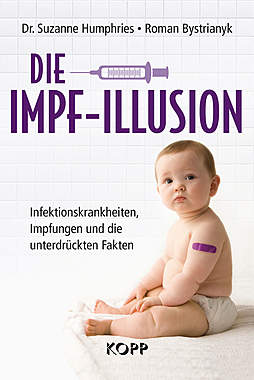- Wie die Banken das Volk aussaugen, guter Aussie-Artikel (engl.)... mT - igelei, 18.03.2007, 11:14
Wie die Banken das Volk aussaugen, guter Aussie-Artikel (engl.)... mT
-->Sub-prime worries echo the S&L crisis
THE AUSTRALIAN
Stephen Ellis
March 15, 2007
DID those troublemaking sub-prime US home borrowers
actually know that their mortgage rates could (and in many
cases certainly would) go up one day? Were they properly
informed by sub-prime lenders?
That's the startlingly mundane question at the core of the
sub-prime mortgage meltdown, which threatens global
markets and may billow into a financial cataclysm to rival
the 1980s US savings and loan (S&L) financial debacle.
Both the question - obvious though the answer might seem
to most Australians - and the comparison are worth
scrutiny.
There is a reasonable chance some of these poor and
usually first time home buyers - with loans Wall Street
likes to refer to as"trailer-trash mortgages" - didn't
understand they were taking out variable rather than
fixed-rate home loans.
After all, most US mortgages historically were flat rate -
repayments were constant over their 20 or 30-year term,
although the mix of interest costs and capital repayments
obviously varied.
Just as Australian mortgages became a more diverse mix of
fixed and variable rate loans through the 1990s, a
minority of the US market has gradually shifted to
variable rate loans. And thanks to the exceptionally low
level of near-term interest rates in recent years, which
made these loans appear stable and cheap, these were often
the very loans that sub-prime lenders pushed hardest to
less traditional home buyers, such as those in, yes, you
already know where they supposedly live.
Again, just like Australia, some lenders also went a step
further by structuring variable loans so that they had
below-market"introductory" interest rates for the first
year or so, but the cost of the loan ramped up above other
variable loans later.
In Australia, regulators informally frown on these deals
because they fear they may induce the poorest households
into buying homes they can't afford - into overcommitting.
In the US, it looks as if that is exactly what has
happened.
Now that interest rates at the short end are higher
(thanks to the Fed's tightening cycle, which has lifted
official rates from 1 per cent to over 5 per cent since
2004) the interest rate on US variable mortgages (for
"good" customers) has risen from 2 per cent to 6 per cent.
In the sub-prime market, the rise plus, perhaps, the
impact of the recent economic slowing or other factors has
driven up the proportion of loans in arrears from 3.8 per
cent last year to about 4.4 per cent now.
In a small and obviously always risky segment of a fairly
dull part of the financial markets, is that really enough
to cause global disaster?
The 1980s S&L crisis, which eventually led to industry
losses of $US150 billion, almost all borne by federal
taxpayers, had its roots in poorly designed regulation of
this part of what then were newly liberalised US financial
markets, rather than the sale of unaffordable loans to
poorly informed consumers.
S&Ls were the US equivalent of Australian building
societies - small, community-focused financial
institutions focused narrowly on low-cost deposits and
home mortgages.
Towards the end of the Carter administration the rules
governing S&Ls were loosened to allow them to engage in a
much broader range of lending, at first akin to the
activities of banks, and later beyond those.
At the same time the federally backed insurance of
depositors was increased from $US40,000 to $US100,000 -
encouraging greater risk-taking in S&L lending and
triggering a rush of money into them.
Perhaps worst of all, S&Ls were allowed to choose whether
they were state or federally regulated, and several big
states which earned large fees from registering S&Ls
engaged in a"race to the bottom" in offering lax
supervisory regimes.
This meant overextended S&Ls were rarely detected until it
was too late to arrange the stealthy, low-key rescues and
"mergers" that the Fed and other regulators achieved with
precarious US banks.
This nightmare combination of deposit insurance, novice
S&L managers venturing into distant new markets, lax or
non-existent regulatory regimes, a flood of money and the
booming 1980s soon produced the predictable outcome.
The S&Ls were pillaged of their best assets by the big
Wall Street houses, which quickly figured out that a bunch
of dusty Fannie Mae-supported mortgages snapped up at 60
per cent of face value from struggling narrowly based S&Ls
in the flyover states could be pooled, securitised and
resold as diverse, near federal-quality, mortgage-backed
bonds at large profits.
The S&L crisis is said to have contributed to the 1990 US
recession, by distorting investment and widening already
huge federal deficits. But it was really a cost arising
from financial deregulation where botched regulation and
moral hazard were exploited by various private sector
parties, many of them both highly colourful and later
jailed.
If you're watching the recent antics at some of the
shiftier sub-prime lenders, there are some notable
similarities in look and feel. But when anyone is talking
about where the direct economic costs of the meltdown will
be felt, they are usually expressed as a decline in bond
trading volumes, or in issuance of particular asset-backed
securities such as CDOs or the more racy variants of
mortgage-backed securities. In other words, this is a
scandal that does not, as yet, put taxpayers at risk, nor
pose much of a threat to the economy.
It is a threat to Wall Street's record profits, sure - and
that in turn hurts the rest of the economy over time.
But it is not an economic indicator of any significant
value, other than telling the market what the smart
players have known for a while - the days when risk could
more or less be ignored and Wall Street could profit
endlessly from chopping up and repackaging obligations
into a myriad exotic variants which would all be happily
purchased by investors are fast coming to an end.
MfG
igelei
gesamter Thread:
 Mix-Ansicht
Mix-Ansicht

